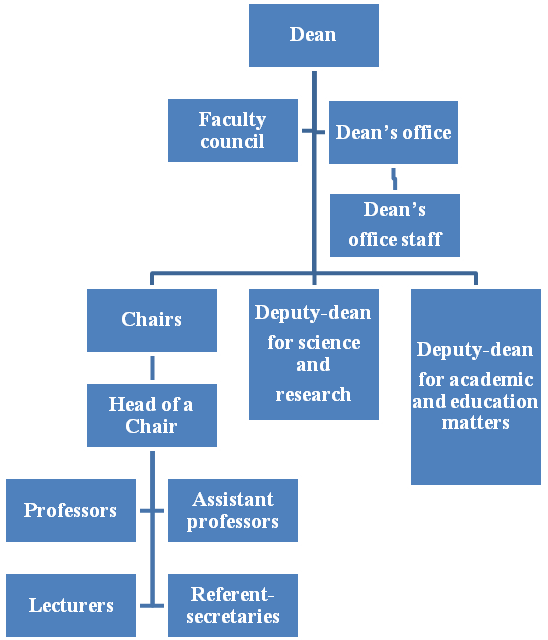
- •1. University Studies and Research Work.
- •Industrial Shop Corporation
- •Classical Research University
- •Factory University Type
- •Supermarket University Type
- •Project University
- •Network University Type
- •2. Young People in the Modern World. The Idea of Happiness. Problems of an Individual. Stress.
- •3. Belarus and World Community. Living in a Democratic Society. Political Profile of a Country. Leading International Organizations.
- •4. Profession of a Journalist.
- •5. Careers in Journalism.
Exam topics
1. University Studies and Research Work.
Structure of the Belorussian State University:

In Middle ages with the help of the word ‘universitas’ (in Latin - combination of many) different communities were called, such as comradeships, merchants‘ guilds, trade-production shops etc.
Now the word “university” means institution of higher education, usually comprising a liberal arts and sciences college and graduate and professional schools and having the authority to confer degrees in various fields of study. A university differs from a college in that it is usually larger, has a broader curriculum, and offers graduate and professional degrees in addition to undergraduate degrees.
Rector (in Latin ‘rector’ – ruler, leader) is the head of the university and a number of other higher educational establishments. The rector is appointed to lead all activities of the university or other higher educational institution including curricula and programs functioning and planning of research activities. The rector is a chairperson at the meetings of the Scientific Council of the university and approves its decisions.
Faculty (from Latin ‘facultas’ – possibility, capability) – a part of the higher educational establishment, where a certain cycle of adjoining scientific courses is being taught. Faculty is an educational-organizational part of a higher educational establishment which unites chairs (departments) that trains students and postgraduates on a number of related courses.
Structure of faculty

Types of the universities
Industrial Shop Corporation
First European Universities originate from Industrial Shop Corporations (Sorbonne and University of Prague). In this model pupils gathered around the master (teacher) to get the mysteries of trade from hand to hand, by the teacher in person. The teacher had small number of pupils. Nowadays this form of teaching is called Associative Pedagogy.
Classical Research University
In the beginning of XIX century Humboldt and Fichte established a new type of University that later became the model of German Classical Research University. That was the formation of a new type of teaching – professor as a scientific knowledge holder and as a teacher who familiarizes students with the true science and art. The teacher shares not just his own experience, but also some kind of universal experience of generations, estranged knowledge. This model was taken into practice by all the European countries and Moscow University established by M. Lomonosov followed this model as well.
Factory University Type
Factory University Type is the type of University where science takes the sidelines and, instead of assimilating the scientific basics, students assimilate different systems of knowledge, packed in academic subjects. Students learn about 80-100 academic subjects. One of the defining traits is a teacher-specialist who, following the standard scheme, transfers knowledge estranged from its holder. His task was to prepare hundreds and thousands of specialists who know and can use standard set of actions and procedures. Due to the rapidly developing economy and knowledge growth and complication, boost of professional requirements, this University type is becoming behind the development and losing its positions nowadays, though some Russian Universities still use this model.
